Collections
December 22, 2021
You can glean an extraordinary amount of information about people based on what they fill their space with. Photos, clothing, colors, trinkets, all of these are an extension of who a person is. People collect things that reflect themselves.
In order to explore this connection, and to learn more about my peers, I interviewed three people on the objects they collect.
I first spoke with senior Jamie Davignon, who collects flashlights, globes, rocks, antique coins, and instruments.
We opened with questions about Davignon’s flashlight collection. They started their collection a little over two years ago because of an interest in survival gear, and because “they just looked cool.” Due to how carefully they select new additions, it has slowly grown to eleven strong.
The flashlight that started it all was a small one that Davignon explained was meant to fit on a keychain. The end of the flashlight unscrews, revealing a hollow inside that is intended to store money- helpful if a stolen wallet leaves you stranded. They admitted, after some persistent questioning, that the hole was also big enough to fit a small wasp- opening many new doors of possibilities.
From there, Davignon continued collecting. They’ve obtained both a police bike flashlight, and one with a pocket knife attached- when asked how they acquired these items, they simply stated “I know a guy.”
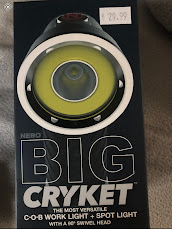
One of the most impressive additions to their collection is a flashlight that can be seen from 5.897 nautical miles away. The head rotates, and has two blinker modes- a fast one, and a slow one. With careful timing, it can be used to communicate in morse code with your family who have stranded you on an island several nautical miles from shore.
Davignon went on to tell about their newest- and favorite -addition. It hails from Amesbury Industrial, which, according to them, is the best place to buy flashlights- “They have the coolest ones.”
This flashlight has a spotlight mode, a room light mode, a red mode for night vision, and it can dim to the user’s preference. The head can rotate, and it can both clip onto a belt and attach to surfaces magnetically. After a brief demonstration, I can confirm that it is a very cool flashlight.
We then switched gears to discuss Davignon’s impressive collection of globes and maps.
They originally began collecting globes because they looked cool, and because of a love for anthropology, geography, and geology. Now, their collection has grown to six globes and three maps in total.
According to Davignon, only two brands of globes are good enough for their collection- Crams Imperial and Hammond. Their first globe was a Crams: it’s black with multicolored continents, and while it was produced in the 1950’s it was based on how the land was divided in 1949.
Their favorite is another Crams. It was produced in 1953, and the metal base has been changed to wood- likely because of damages. According to Davingnon, the original base would “absolutely kill your foot if you dropped it,” but was likely replaced for reasons other than a poor nineteen-fifties man dropping the globe on an unfortunate foot and hurling it through the window shortly thereafter.

Out of their three maps, their favorite is one entirely of the Mediterranean. It is written entirely in Latin, and therefore the date it was originally printed is unknown. It is both delicate and beautiful.
When asked where their love of maps came from, they explained that old maps are where many geopolitical and anthropological theories can be gleaned. For example, their favorite theory, one created by Professor Hapgood of Kenne State, was based on the Piri Reis map.
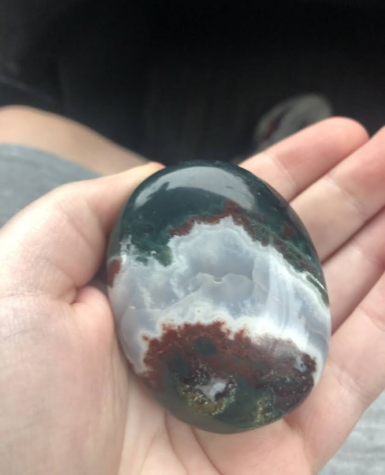
Reis was a Turkish Imperial and cartographer, and one of his maps depicted pre glacial Antarctica. However, in the creation of this map, source maps from the ancient library of Constantinople were used. These source maps perfected the longitude and latitude of Antarctica, even though they were dated from before the Roman Empire- or, before longitude and latitude came to Europe. Therefore, they imply that there was a society capable of perfect cartography far before Europeans were- and therefore, far earlier than historians had previously thought.
They also have an expansive collection of rocks, instruments and antique coins. Their favorite rock is worth 218 dollars. It’s a large piece of moss agate from Madagascar that’s green, red, white, and looks very pretty.
Their favorite coin is a 2005 Buffalo nickel- which would be unimpressive, but an error in the creation that makes it appear as though a spear is going through the heart of the Buffalo makes the coin worth approximately 2,500 dollars. They also have a Canadian coin that’s made of Mercury. As a result, it therefore must be kept in a sealed metal box, “so I don’t accidentally poison myself.”
And of course, their favorite instrument from their five-strong collection is the harmonica. “It’s just so little.”
Next, I interviewed sophomore Lindsey Whalen on her collection of llamas.
Whalen said her llama collection, which has grown to twelve beasts all together, started a few Christmases ago. It originated as “one of those things where some relative gets you a random thing for christmas, and you have to pretend you like it a lot, and then people keep getting you the same thing because you pretend to like the first one- but now I actually like llamas, so I guess it’s fine”
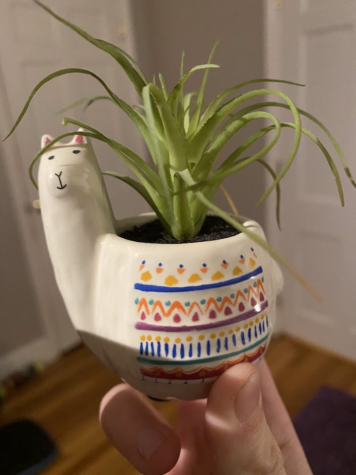
The first llama she got is still one of her favorites. It’s small, about an inch in diameter, and the back of the llama is a flowerpot with a fake succulent inside- which Whalen says is good, as she would probably kill a real one. The llama has a string attached on either side, transforming it into a cute little hanging plant that could survive even the toughest apocalypse- or even Whalen’s forgetful tendencies.
Her most recent llama is a small figurine from Life is Good that appears to be made out of a tough string- almost like straw. It’s white, with two pom poms sticking out of the side of it’s head- we debated for a while if they were meant to be earmuffs, festive horns, or the result of a cheerleading accident. Either way, he is a very festive creature.
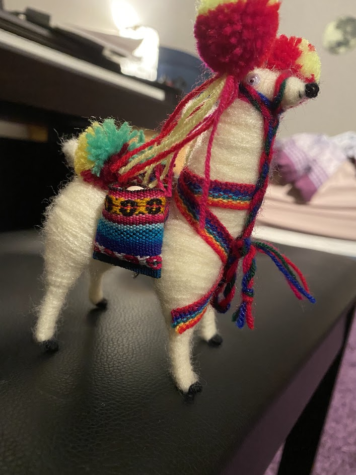
But the honor of being her true favorite- and debatably, the highlight of her room -goes to her three foot tall painting of a llama with reading glasses. The background is a light purple, making the intellectual llama pop, and adds a quirky atmosphere to her entire room. Whalen says he was another Christmas gift, hailing from Marshall’s where he was sold for “far less than what he’s worth,” and was one of her favorite gifts that year. He is truly a masterpiece.
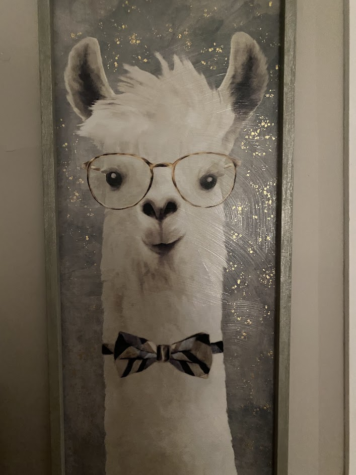

Finally, I interviewed sophomore Gulshan Sayoni on her sock collection.
Sayoni began collecting funky socks last December, when she noticed that Fat Face in Newburyport had begun to sell cool ones. After buying her first pair, she was given a punch card that would allow her to get her eleventh pair free- and from there, she was sold.
Her first pair of socks were “an adorable pair with baby squidward on them.” Fat Face has an entire line of baby spongebob characters, and as of now she has nearly all of them.
Her favorite pair are a bright green pair of sour-patch kids socks that are dotted with the candies. She says that the color makes it hard to pair them with an outfit, but “the fact that they are sour patch kid socks makes up for that completely.”
Finally, her favorite pair is a purple set. You can wear them normally, but they are specially designed to be used as sock puppets- Sayioni emphasizes that they should be washed before you do this. She says she has them in white, green and blue.
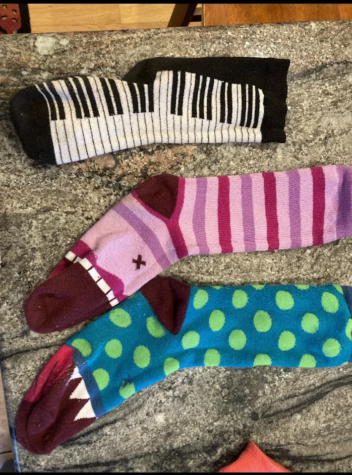
These are just a few of the objects that Pentucket students collect. From looking at what they surround themselves with, it is clear that Jamie values learning, Lindsey appreciates gifts from her family, and Gulshan adores creativity and fun. From their delight during these interviews, it is clear how much these trinkets have enriched their lives, and I wish them the best of luck in growing their collections for many years to come.
